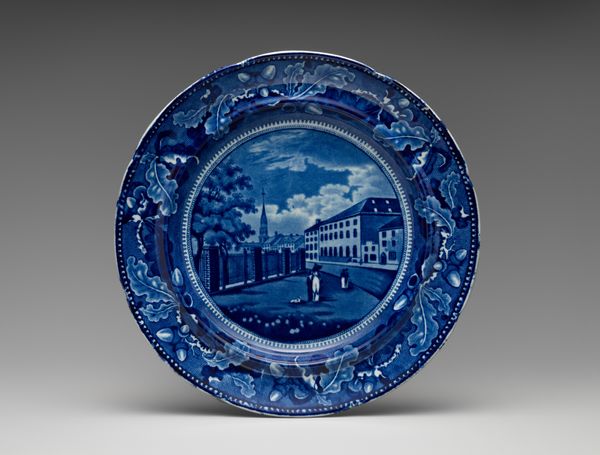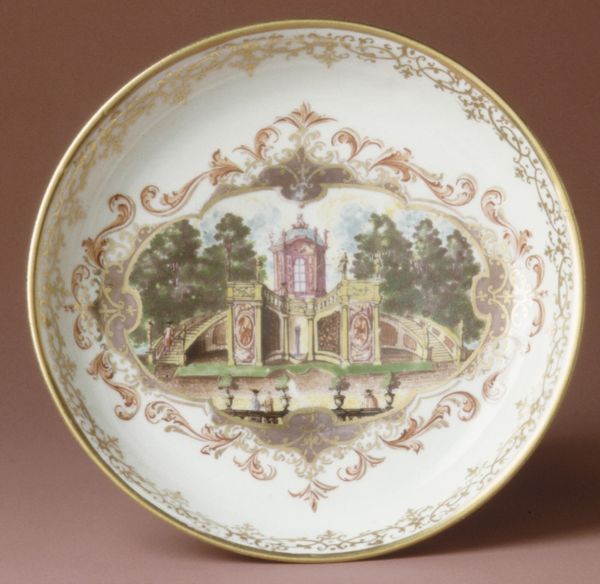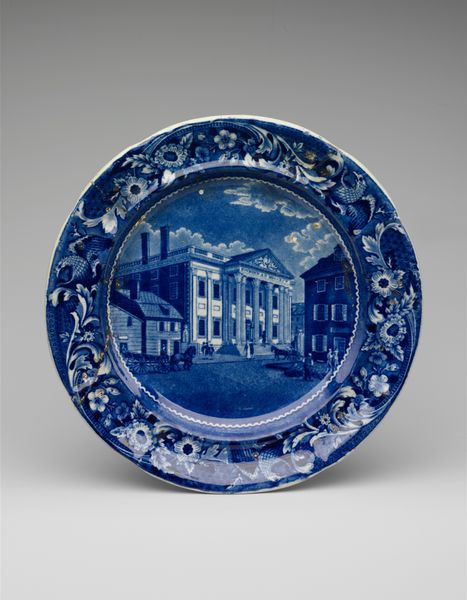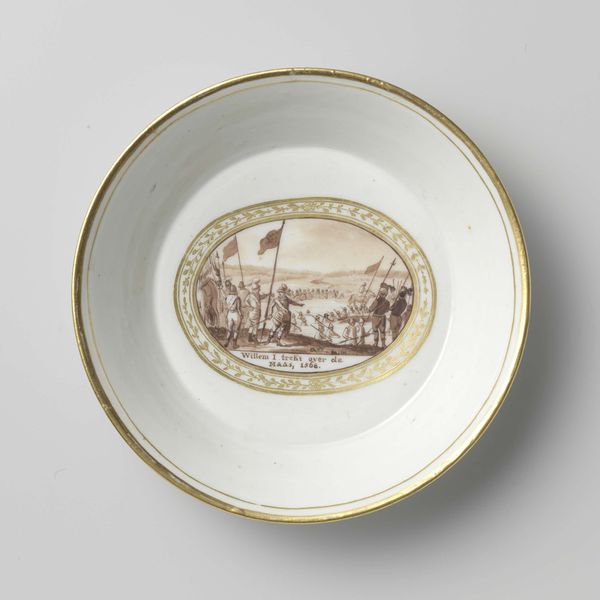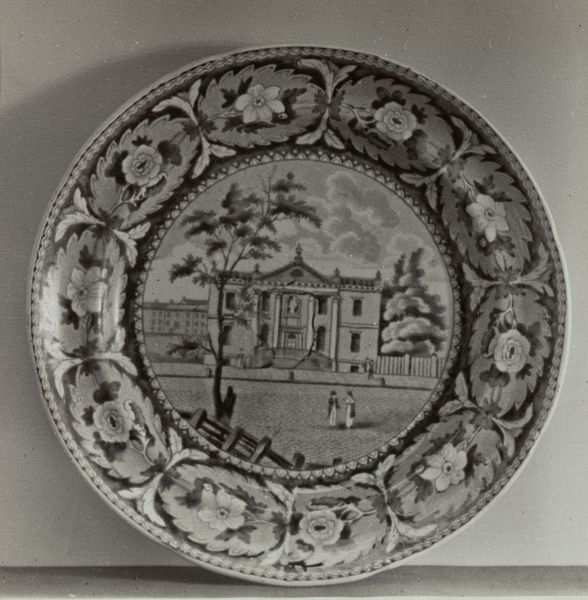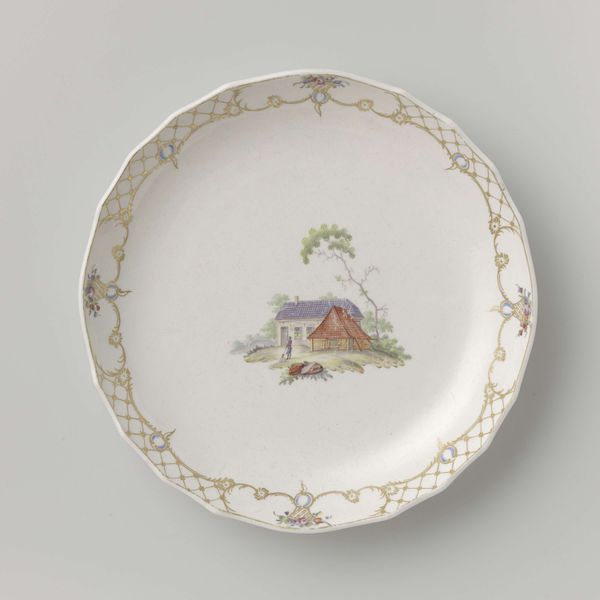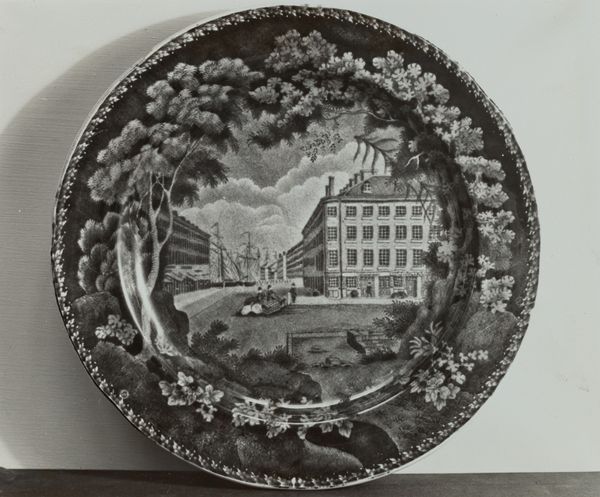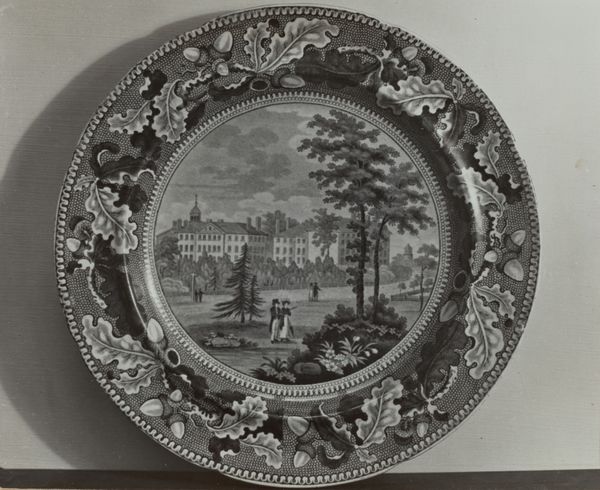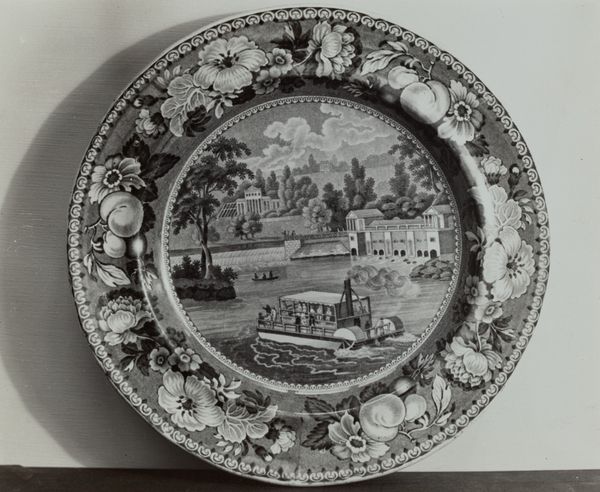
drawing, print, ceramic, earthenware
#
drawing
#
decorative element
#
pottery
# print
#
ceramic
#
earthenware
#
stoneware
#
orientalism
#
ceramic
#
genre-painting
Dimensions: height 2.6 cm, diameter 22.4 cm
Copyright: Rijks Museum: Open Domain
Editor: This ceramic plate, "Bord met op het plat een oosters straatgezicht", roughly dates between 1863 and 1958, and it presents us with a street scene rendered in earthy red tones. It’s beautiful, in a nostalgic sort of way. What kind of a story can you weave around it? Curator: The use of “oriental” imagery in the 19th and early 20th centuries reflects a powerful trend of European artists imagining the East, not always based on accurate depictions. Societé Céramique, here, produced an everyday object embedded with those visuals. Consider how the plate functions, used within domestic settings: how might that impact or influence its viewers understanding or appreciation of a distant locale? Editor: So, this plate acted as a sort of window, even if a distorted one, to a completely different culture? Was this exoticism common at the time? Curator: Absolutely. “Orientalism” became quite fashionable in European art and design. The increased trade, colonialism, the idea of understanding or at least picturing this “otherness”. Objects like this plate allowed people to bring exotic fantasies into their homes. Look at the detail - almost generic and perhaps inaccurate representation - how do you read that, given its purpose? Editor: It makes me think about the power dynamics at play. While it may seem beautiful on the surface, it also signifies a specific way of seeing and perhaps even controlling another culture through representation. Curator: Exactly. These kinds of mass-produced items demonstrate how dominant narratives are perpetuated, normalizing a particular relationship with the "Orient." Examining the plate prompts us to reflect critically on the historical context and social impact of these visual representations. Editor: I hadn't thought about it that way, but seeing it as part of a bigger socio-political context is fascinating. It certainly makes me look at decorative arts differently now. Curator: Hopefully, this analysis helps you appreciate how these seemingly innocent objects can reveal layers of history, cultural exchange, and unequal power structures.
Comments
No comments
Be the first to comment and join the conversation on the ultimate creative platform.

